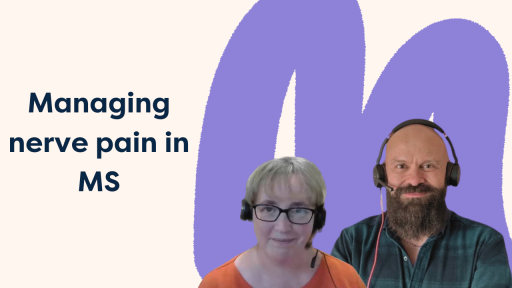It’s known that there is a delay between starting a disease modifying drug (DMD) and getting full benefit, described as ‘therapeutic lag’, but its not clear how long this is for each of the DMDs. A recent study has investigated how long it takes for a DMD to be fully effective.
This study combined medical records taken from a large international registry, MSBase, with a French MS registry and one UK MS clinic. Relapse rate and disability levels from 9000 people in the three years before treatment and during at least one year of treatment (for relapses) or at least five years of treatment (for disability levels) were analysed to estimate therapeutic lag for each of the DMDs.
Overall, therapeutic lag for relapses was 3 to 7 months. Copaxone and Gilenya had the shortest therapeutic lag, while Tecfidera had the longest. Therapeutic lag for disability was longer, ranging from 7 to 16 months.
The results confirm that there is a delay in getting full benefit from each of the DMDs. This should be taken into account when assessing MS activity, particularly during the first few months after starting a DMD. If you have a relapse during the first six months of treatment it does not necessarily mean that your DMD is not working, and most neurologists will recommend that you continue with the treatment for at least one year.
More importantly, the results have implications for the design of clinical trials for new MS treatments, particularly those for progressive MS where disability levels are the main measure of success. Clinical trials will need to be longer than 2 years to fully assess the potential of a new treatment to slow down, stop or reverse disability progression.
In relapsing remitting MS, disease modifying drugs (DMDs) work with different parts of the immune system to reduce the inflammation caused by MS to nerve cells in the brain and spinal cord. This helps reduce the number and severity of relapses and the build-up of disability which can occur if you don't recover completely from relapses.
It’s known that there is a delay between starting a DMD and getting full benefit, described as ‘therapeutic lag’, but how long this is for individual DMDs is not clear. Two recent studies have investigated how long it takes for a DMD to be fully effective at reducing relapses and slowing down disability progression and the factors that might affect therapeutic lag.
This large study combined data from the multinational registry, MSBase, with a French MS registry and one UK MS clinic. Medical records up to the end of 2018 were selected for people for whom there was at least three years of clinical data prior to treatment and one or more years of data while taking a DMD. Relapse rate and disability levels in the three years before treatment and during at least one year of treatment (for the effect on relapses) or at least five years of treatment (for the effect on disability levels) were compared. The researchers analysed the data to estimate therapeutic lag for each of the DMDs – the point at which relapse rates and disability levels became stable after a new treatment was started.
Researchers identified records with the required data from just over 9000 people. These provided 11,180 treatment periods for analysis of relapse therapeutic lag and 4088 treatment periods for analysis of disability level therapeutic lag. There was not sufficient data to calculate therapeutic lag for two recently introduced DMDs, Mavenclad and Ocrevus.
Overall, therapeutic lag for relapses was 3 to 7 months. Copaxone and Gilenya had the shortest therapeutic lag, while Tecfidera had the longest. Therapeutic lag for disability was longer, ranging from 7 to 16 months.
Pre-treatment relapse activity and disability level appeared to have the greatest impact on therapeutic lag. For relapse activity, a longer therapeutic lag was associated with women, higher initial EDSS and lower initial relapse rate. For disability, a longer therapeutic lag was associated with men, higher EDSS and higher initial relapse rate.
The results confirm that there is a delay in getting full benefit for all the DMDs and can range from 3 to 7 months for a reduction in relapses and from 7 to 16 months for an effect on disability progression. This should be taken into account when assessing MS activity, particularly during the first few months after starting a DMD. If you have a relapse during the first six months of treatment it does not necessarily mean that your DMD is not working, and most neurologists will recommend that you continue with the treatment for at least one year.
More importantly, the results have implications for the design of clinical trials for new MS treatments, particularly those for progressive MS where disability levels are the main measure of success. These two studies have shown that it can take up to 16 months for a DMD to have a full effect on disability progression; people with higher initial disability levels may also take longer to respond to treatment. Clinical trials longer than the standard 2 years may be needed to fully assess the potential of a new treatment to slow down, stop or reverse disability progression.
Roos I, et al.
Delay from treatment start to full effect of immunotherapies for multiple sclerosis.
Brain 2020; 143(9): 2742-2756.
Watch the lead researcher explains the study - YouTube
Roos I, et al.
Determinants of therapeutic lag in multiple sclerosis.
Multiple Sclerosis Journal 2021:1352458520981300. [Epub ahead of print]


